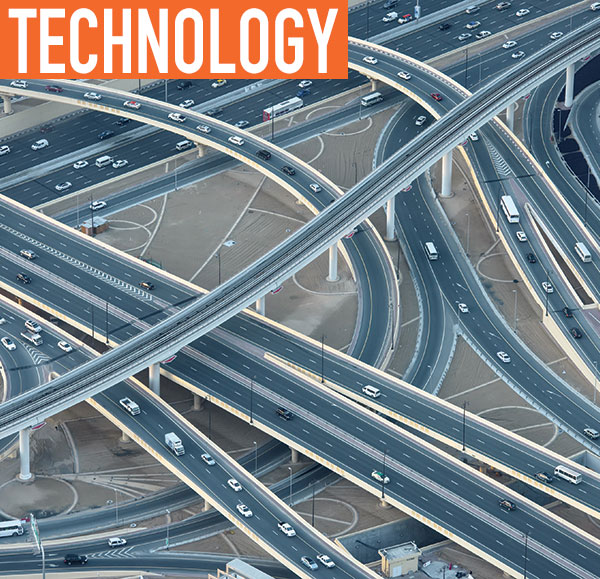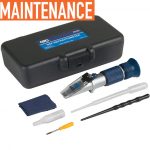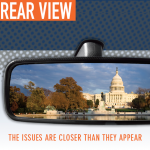In the news, autonomous and “self-driving” vehicles continue to receive our attention—with commercial truck fleets joining passenger cars in speculation on how transportation will change in the near future.
But, the vehicles themselves are only part of a larger phenomenon. So far, we have mostly thought of these cars and trucks as independent rolling entities, using cameras and sensors to monitor ordinary road conditions and operate themselves accordingly.
Within a few years, that is certain to evolve in a different direction. We can expect to see autonomous motor vehicles as one component in an interconnected network for roadway management—a network that may be as revolutionary in changing the way we move goods and people as the internet has been in communicating information.
The comparison between a vehicle network and the World Wide Web is particularly apt, because we are already referring to machine-to-machine communication as part of the Internet of Things.
MULTI-PROCESSES SYNCING
The transportation industry will implement this connectivity of machines by building not only smart automobiles, but smart cities—environments that interact with the vehicles rolling through them.
With connected vehicles, that technology can smooth out urban traffic flows, synchronizing vehicle movement, as well as stoplight cycles, cutting travel time through more efficient routing, and delivering better results in fuel consumption, while reducing airborne pollution and the production of greenhouse gases. A coordinated, synchronized traffic flow can also sharply reduce accidents and collisions.
PROJECTIONS
Management consulting firm McKinsey & Company foresees this evolution occurring in three phases:
- Development of the technology, with industrial fleets leading the way in adopting it
- Individual consumers join in its purchase, replacing their cars with autonomous versions
- These vehicles become the primary means of transport
When the last of these is accomplished, McKinsey predicts, travelers will see accidents diminish by as much as 90 percent, saving thousands of lives and possibly $190 billion per year.
Other improvements these changes may bring have been addressed in a number of studies. In 2012, the Texas A&M University Transportation Institute issued its Urban Mobility Report, showing that in the previous year Americans lost 5.5 billion hours while stuck in traffic. At around the same time, the USDOT produced a study estimating that a system of connected vehicles might be able to reduce these travel time delays by more than one third.
As for the environmental cost—the same agency estimated that current rates of traffic congestion waste about four billion gallons of fuel each year. That is nearly a third of the annual flow received from the Alaska pipeline.
Finally, regarding the avoidance of accidents that automated vehicles will make possible, a September 2016 study by the USDOT stated that in the preceding year, 35,092 people died on US roadways. The agency also noted that 94 percent of crashes can be tied to human error.
HOW FAR AWAY
The investment in time and money to make this transportation interface a reality has begun. In September 2015, the Obama administration first publicized its Smart Cities Initiative and pledged $160 million in research for communities toward fighting traffic congestion, as well as other improvements, such as reducing crime, fostering economic growth, and protecting the environment.
In June 2016, the program took another step forward with the announcement by Transportation Secretary, Anthony Foxx, that Columbus, Ohio, had been selected as the winner of the USDOT Smart City Challenge. The city is reshaping its urban and interurban transport network to use data in moving traffic.
We are seeing this technology in current use elsewhere, particularly in Europe. In London, the SCOOT traffic management system has a supercomputer that controls traffic intersections and increases green-light time. In Hamburg, Germany, networking specialist Cisco Systems installed a system that allows local authorities to control traffic, lighting, and parking through a centralized nexus.
FLEET OPERATOR BENEFIT
As fleet professionals, we are quite familiar with the business and financial advantages of a smart vehicle fleet. We’re accustomed to trucks and heavy equipment that monitor engine data and can alert us in advance of a potentially serious breakdown. We use GPS to show us in real time where the vehicle is.
The ongoing record of driver behavior communicated by these smart vehicles allows us to detect and implement measures to correct unsafe driving habits. More effective communications and routing are also real benefits to shortening distances and avoiding roadblocks, managing vehicle availability, and putting drivers where they need to be.
Fleets that are equipped with this GPS fleet tracking software have a head start on the path to a smart-cities future. These fleet managers and drivers are getting used to technology that will become mandatory—not just from a regulatory perspective, but because soon, trying to run a business without these tools will become economically unsustainable. Having this know-how onboard in the early stages confers a decided business advantage.
What remains is that last step: connecting the vehicle fleet with the cities. This will complete what now amounts to a partial network, providing the link that unites cars and trucks with the streets and highways they travel on. It is almost certain to produce synergy between the two—with better results for all.
FOR MORE INFORMATION:
Sid Nair leads the transportation and compliance practice at Teletrac Navman. He has more than 12 years of experience in various transportation sectors, such as precision agriculture, aerospace, connected cars, and fleet management. He holds a BS in electronics engineering from Mumbai University, India, and an MS in EE-Avionics from Ohio University. Find out more about Teletrac, visit www.teletracnavman.com.
_______________________________________________________________________
MODERN WORKTRUCK SOLUTIONS: DECEMBER 2016 ISSUE
Did you enjoy this article?
Subscribe to the FREE Digital Edition of Modern WorkTruck Solutions magazine.
![]()




